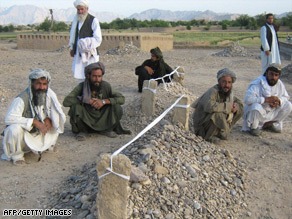
The deaths of about two dozen civilians in U.S. airstrikes in western Afghanistan this month were "most likely" accidental, according to a U.S. military investigation.
A U.S. military source, who requested anonymity because the investigation has not been made public, told CNN there was no evidence of a second phase of air strikes in which a large number of civilians were killed. Some villagers had reported what they thought was an initial bombardment, followed by a heavier round of strikes on the evening of May 4, in which the majority of civilians were killed. A review of combat camera footage and cockpit audio recordings indicates three F/A-18s and a single B-1 bomber took sequential turns over Farah Province, where there was heavy fighting on the ground, the official said. The B-1 was the final plane used, but there was no gap between bombing runs, according to the official. The B-1 dropped three bombs and the F/A-18s dropped five, the official said. The tapes and audio recordings show some bombs were dropped on outdoor areas with suspected insurgents, while others were dropped on groups of people seen going into small buildings, the official said. Audio and video from the B-1 is said to include conversations between the crew and Marine spotters on the ground, discussing what they were seeing and their belief that the people they were targeting were insurgents. Military investigators who went to the region found one grave site with 22 fresh mounds and another site with four. They also went to a mass grave, but could not determine how many people were buried there. Military investigators thought it was an insurgent grave site, because the mass grave was not pointed toward Mecca — usual for Muslim burials — and did not have the markings of a traditional grave of the region, the official said. Insurgents usually are buried in that untraditional manner, he said.